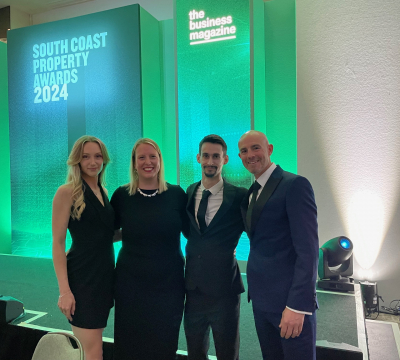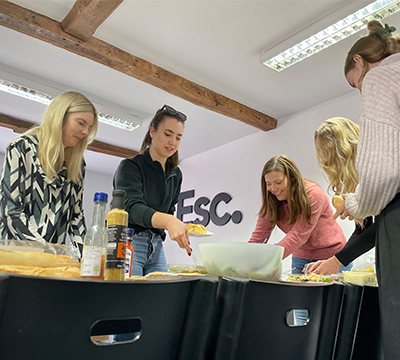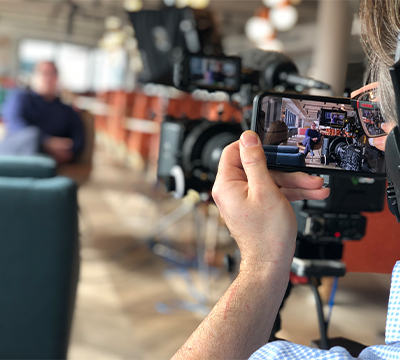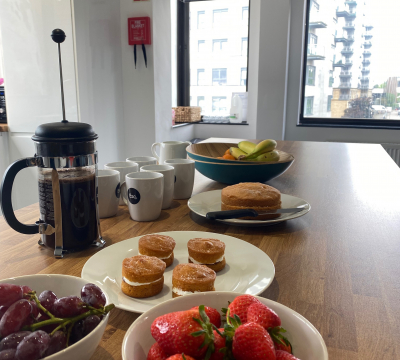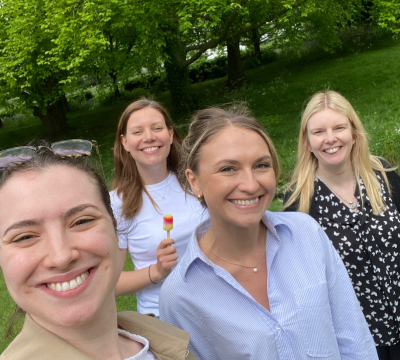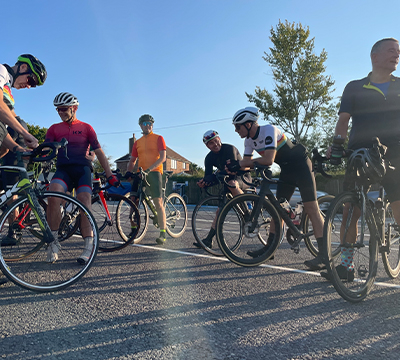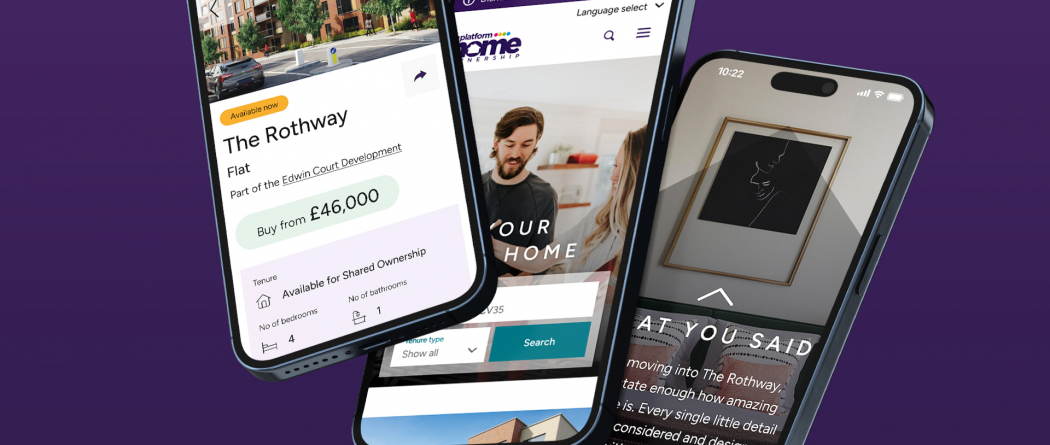
INSIGHTS Understanding Facebook algorithms and what they mean for your business posts

Why does one post go viral and the next goes into hibernation without so much as a solitary token like? Trying to keep up with the changes to algorithms on social media can often feel like a losing battle. And while we’re on it, what exactly is an algorithm?!
In this feature, we’ll bring you up to speed on Facebook’s latest 2021 algorithm changes and what they actually mean for you as a business and how to adapt your strategy to your advantage.
What is an algorithm?
Usually when we consider algorithms we think of complicated computer-based codes and calculations. Whilst this is often true, simply put, an algorithm is just a set of specific rules or instructions to follow in order to solve a problem. This could even be applied to baking a cake - we follow the recipe in the right order to get the cake - the recipe being the algorithm!
So, in terms of computer-based algorithms this could be applied to search engines and how they select which search results to serve based on a user’s search query. Or how social media sites prioritise which posts appear in your newsfeeds.
A little about Facebook and its algorithms
A recent study by Hootsuite revealed that by the end of 2020 organic reach on a Facebook post was down to 5.2% (from 7.7% in 2018), whilst engagement rates were a dismal 0.25%. This is why any Facebook marketing strategy should ideally rely on a mix of both organic and paid content in order to be seen and heard.
Every time we post content, the Facebook algorithm (or Machine Learning ‘ML’ as they like to call it) will decide who sees that post in their newsfeed, based on numerous factors and sets of criteria.
In a nutshell, if you were following 500 friends, business pages and groups, who were each posting daily, your newsfeed would be inundated! So instead, Facebook reviews and scores every post and puts them in a descending order of relevance for each user, narrowing down the total number we see when scrolling. That’s a lot of posts when you consider that there are over 2 billion Facebook users globally.
So what changed in early 2021?
Facebook has told us that posts are now ranked based on what the algorithm determines as those that will elicit a ‘meaningful interaction’.
Meaningful interactions can be based on many things, such as how a user engages with friends, whether they like video more than photos, what do they like, comment on, share, the recency of a post, what their friends are interacting with etc.
Unfortunately for business pages this means a friends and family first approach.

How do posts now get ranked?
There are four main ‘processes’ that make up the Facebook algorithm, determining what a user ends up seeing:
1. Eligible inventory
Facebook creates a collection of all the posts that are available to display in a user’s newsfeed
2. Scoring process
It then scores these posts based on their ranking signals (see below for more details) and discards those that it believes the user is less likely to engage with, such as clickbait.
3. Integrity detection and main scoring pass
These processes are where the personalisation occurs and every individual post is scored independently based on Facebook’s prediction of engagement.
4. Contextual pass
The final stage is based on the variety of content that a user consumes such as video, photos, links, so that they are not constantly seeing the same thing.
Ranking signals
Facebook has said that they use thousands of ranking signals! So rather than feeling overwhelmed, let’s just concentrate on the top four that seem to come up most frequently.
1. Relationship
Who does a user typically interact with
2. Content type
e.g. video, image, link
3. Engagement
Popularity of a post including likes, comments, shares
4. Recency
Newer posts are ranked higher
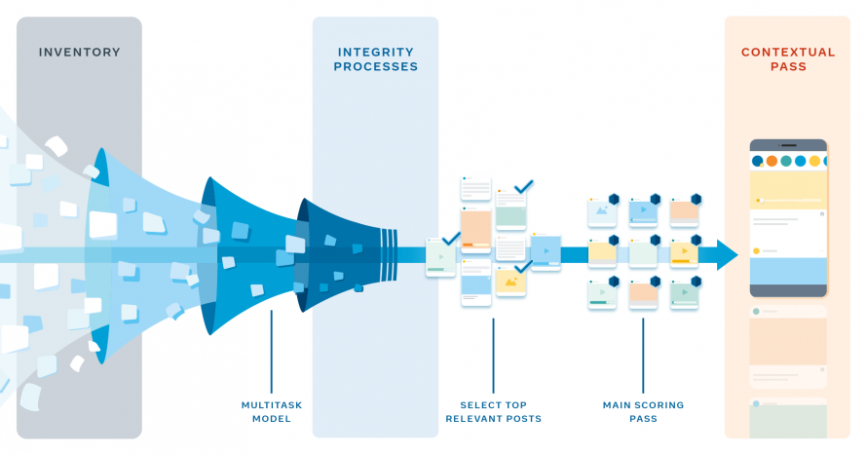
Second chances
According to Facebook itself, there is such a thing as a second chance. If a post was ranked but the user never scrolled down far enough to see it, they apply an ‘unread bumping logic’, allowing that post to be added to the eligible inventory for a user’s next session.
In another scenario, if a post was seen, but has subsequently triggered a lot of conversation amongst a user’s friends, the algorithm applies what they call ‘action-bumping logic’ meaning that the same post can be added again to the eligible inventory for a user’s next session.
What can you do to increase the chances of your company posts getting seen?
Engagement, engagement, engagement!
Facebook favours posts that encourage and achieve engagement. So think of content that will spark a conversation with comments, generate likes (or even better loves!), and is shareable. Asking your community questions is often a great way to get the conversation flowing.
Make use of your brand evangelists - your employees!
Your team will have a far better chance of engagement amongst their followers and friends as they will often have more credibility than a business page does. So ask them to share the love!
Mix up organic and paid content
With a ‘friends and family first’ approach to posts, now is probably the time to review your strategy and start adding some paid advertising into the mix. This way you can reach more of your existing community and target further users too with your engaging content and drive leads to your business page or website based on your objectives.
Be good
Facebook has said that content such as ‘clickbait and the spread of misinformation’ will be factored into their equations and ranked lower or even discarded, so avoid!
So there we have it, Facebook in a nutshell! If it stills feels a bit daunting or you’d like a chat about how to incorporate paid social media into your strategy then we’d love to hear from you.
You can read the full story on Facebook here
Alternatively, if you’re like any of our developers here, you can read the full tech-geek version here
Share insight
Let's talk
- Call us +44 (0) 1256 334567
If you would like to find out more about how we can help you connect strategically, creatively or digitally, then call us or get in touch. We’d love to hear from you.

